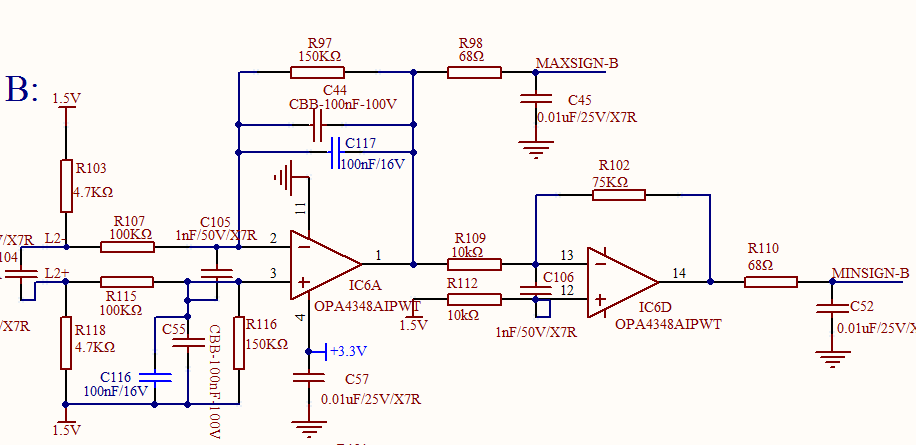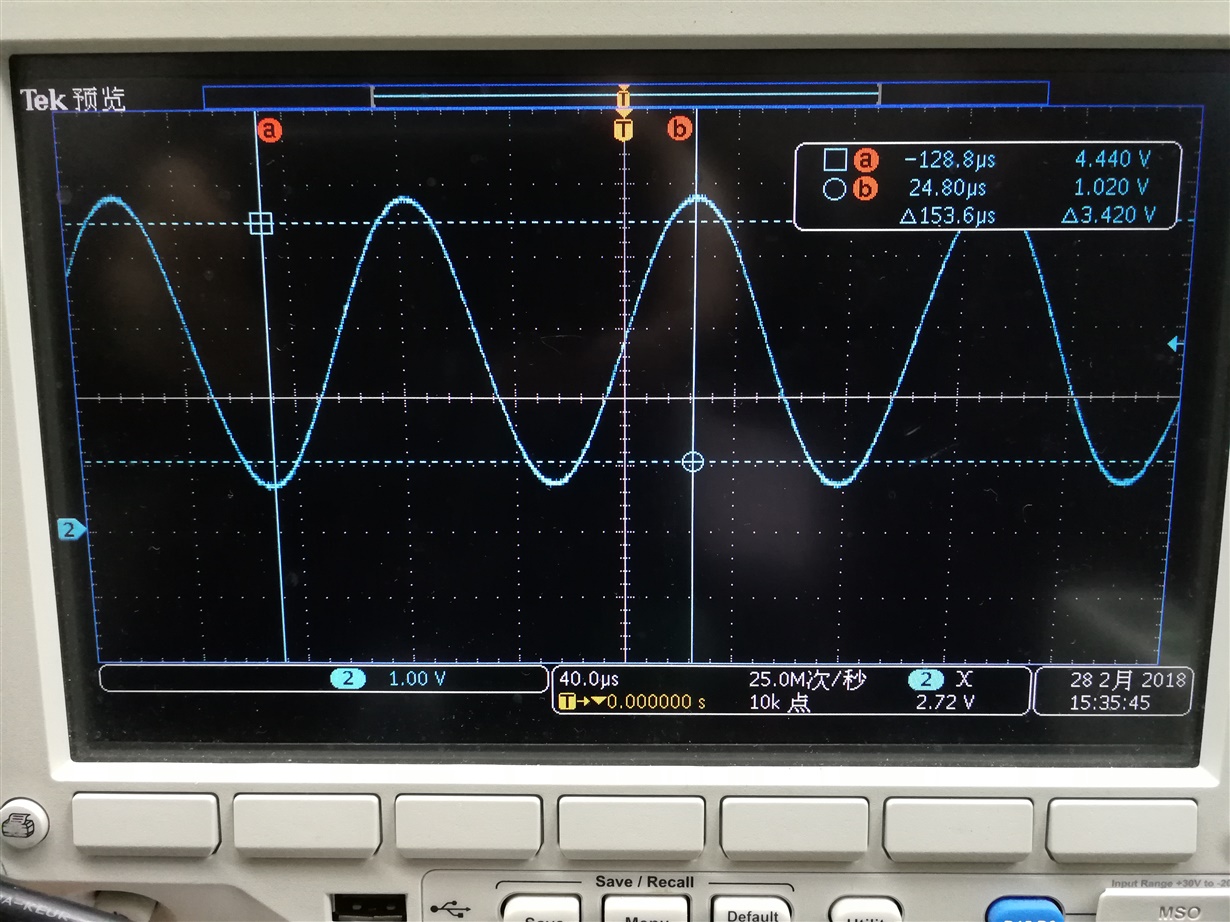Other Parts Discussed in Thread: TINA-TI
Hi! When I was using OPA4348AIDR, I had some problems.The output of op amp is oscillating, and the following are the circuit diagram and waveform.
Take circuit 2 as an example.Only power supply to the circuit, There was no input signal at the input end. C106 position weld 1nF capacitor.The MINSIGN-B produced an oscillating wave and it got back to normal when I removed C52.
The circuit 1 produced another oscillating wave.
How do I know the steady state of the circuit and the τ?Or how do I know the stable parameter. I had simulated the circuit in the TINA.
Can I get your swift support?






